
10 Best Places to Scuba Dive in 2024
The Ocean is a vast, varied and versatile place; covering 71% of the planet and ranging in temperature from 28 – 130 Degrees Fahrenheit with depths of up to 36,201 feet.
There are an estimated 620,000 kilometres of coastline and some 900,000 official islands on planet Earth and within the ocean lies many underwater caves, caverns, trenches, ridges and plateaus.
So it’s totally unsurprising that there are so many incredible dive destinations in the world – and that they’re just as varied as the many diverse ecosystem on land.
In this article, we’re going to take a look at 10 amazing scuba diving destinations – all very different to one another but each being awesome and unique in it’s own way. So let’s get started…
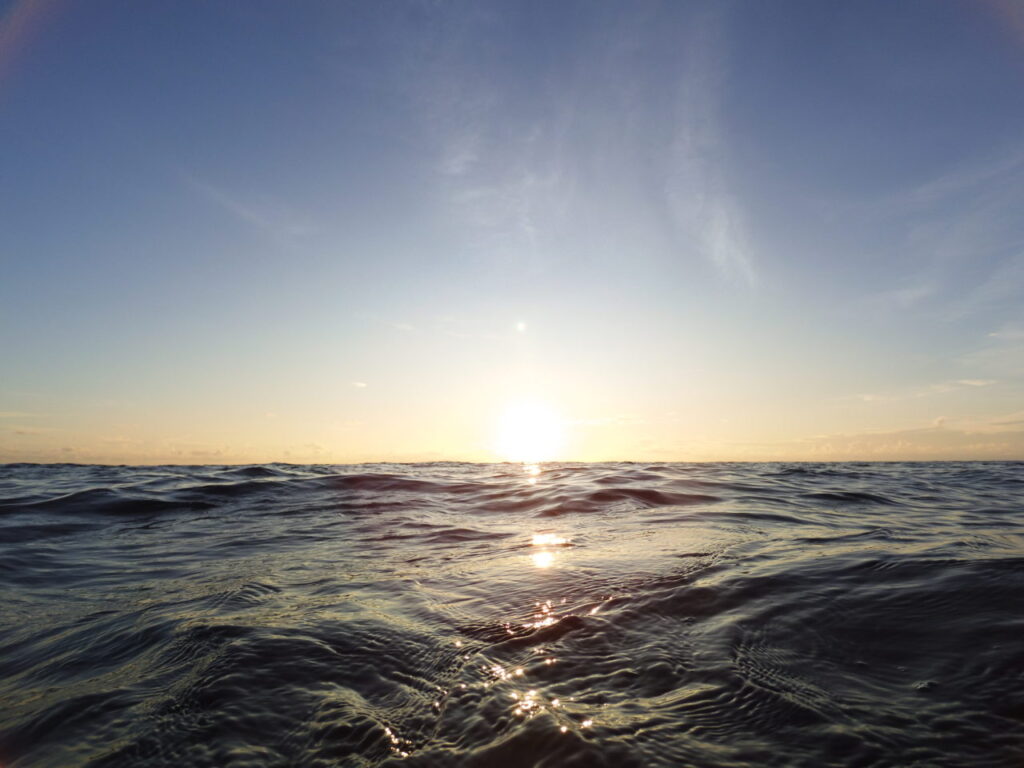
10 Awesome places to Scuba Dive in 2024:
1) The Red Sea
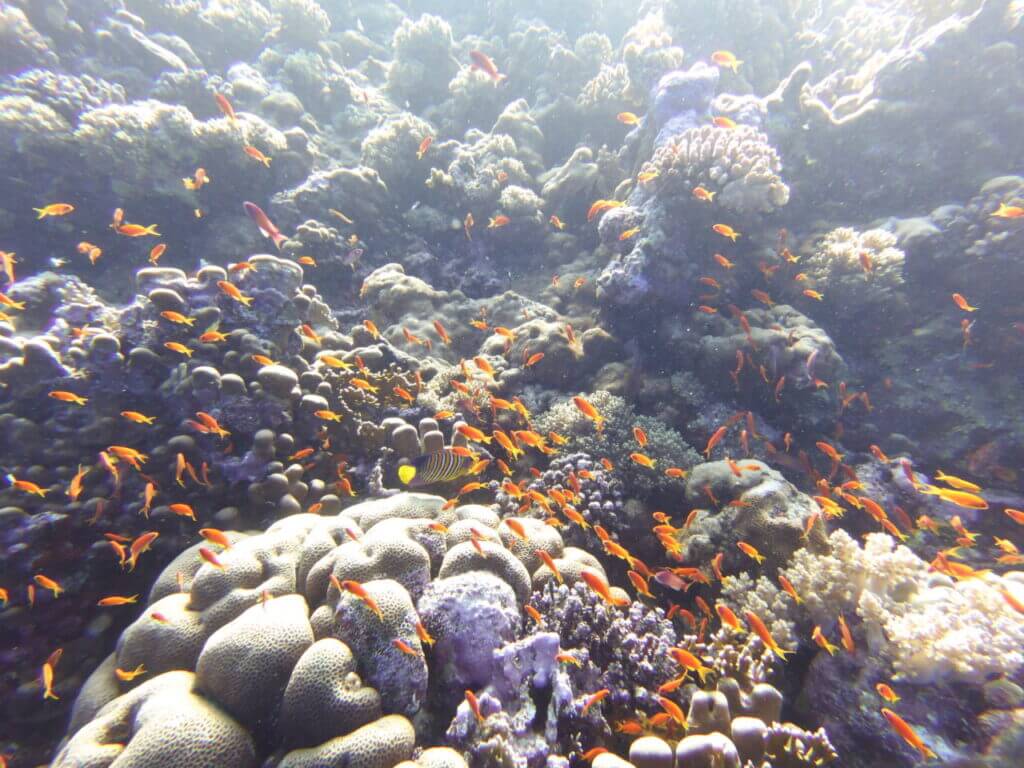
Located between the arid deserts of northeastern Africa (Egypt, Sudan and Eritrea) and the Arabian Peninsula (Saudia Arabia and Yemen), the Red Sea is a narrow body of water 2,250km (1,400 miles) long and 355km (221mi) at its widest point.
The marine life in this region is truly spectacular; with some of the healthiest and largest coral reefs in the world and over 1000 species of fish. To the north, the Red Sea is home to many shipwrecks, making it a wreck dive paradise whereas to the south there are an abundance of pelagic animals including manta rays and many types of shark.
Most Red Sea diving is done from Egypt; which is both easily accessible and cheap; liveaboards in the Red Sea are actually some of the cheapest in the world. Traveller’s in Egypt can also enjoy a myriad of other cultural and historical experiences.
I first dived the Red Sea in December 2022 on the Seawolf Dominator liveaboard; I saw the best coral reefs I’ve ever seen as well as coming face to face with a mighty Oceanic Whitetip Shark!
2) Dumaguete / Dauin
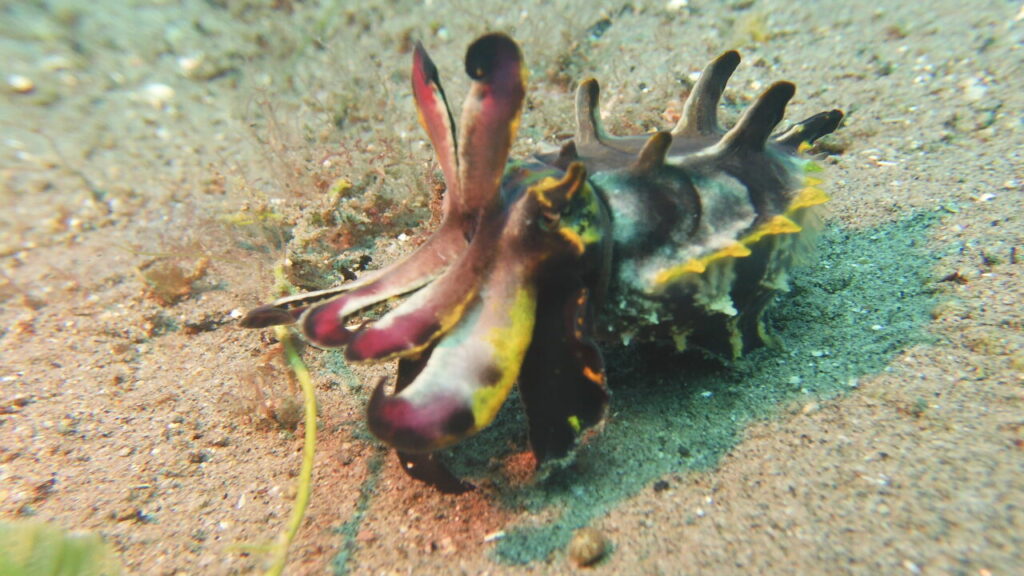
Located at the southeast corner of Negros, an island in the Philippine’s Visayas region; are a series of world-class muck-dives between the hustling seaside city of Dumaguete and the quieter beach town of Dauin.
Muck diving is a term coined by scuba divers to describe dive sites with silty/sandy bottoms that at first seem lifeless but which upon closer inspection; are home to all manner of macro critters such as small cuttlefish, octopus, nudibranch, seahorses, pipefish and pygmy frogfish.
I first visited this region in June 2023 and was blown away by the sheer diversity and abundance of macro critters that I saw; it was the best muck diving I’ve ever done. Something else which makes diving Dumaguete/ Dauin so special is that this is a pretty off-the-beaten-track destination and subsequently you will see few, if any other dive boats.
Negros island is also rife with volcanos, waterfalls and lakes; having some of the best trekking and camping in all of the Philippines.
3) The Aran Islands
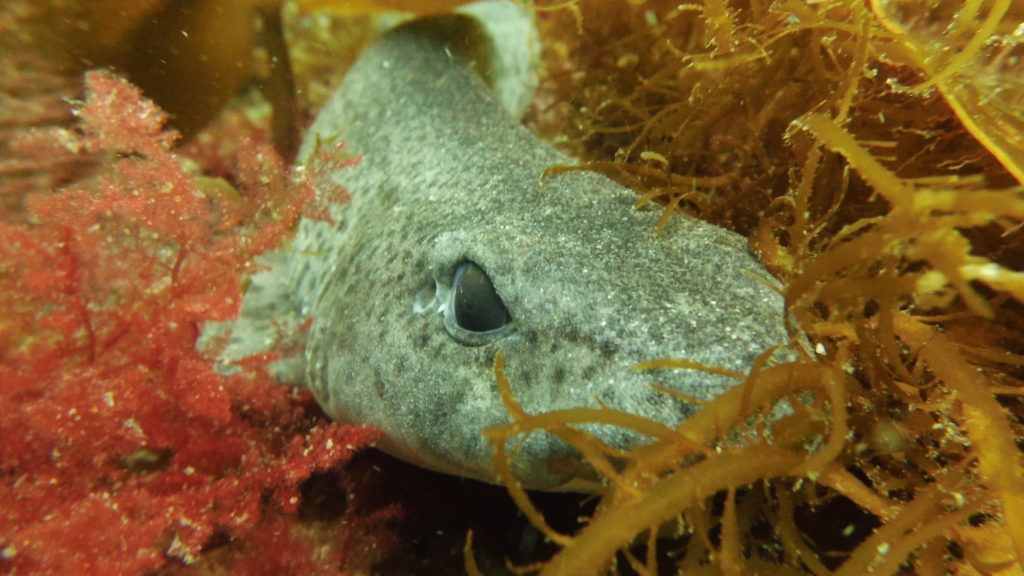
When most people think of scuba diving they envision tropical water’s off white sand beaches with colourful reef fish. However; those who never dive temperate waters are missing out on an entirely different and totally captivating marine ecosystem.
With lush kelp forests, cold water corals and sponges and a dramatic underwater landscape of caves and boulders, the dive sites of the Aran Islands offer a unique experience to divers.
There are all manner of creatures here that you would never witness in warmer waters such as three foot long catsharks; colourful cuckoo wrasse, shimmering pollock, spider crabs, spiny lobsters, white nudibranch and scores of moon jellyfish and thousands of tiny white starfish. Especially lucky divers can even spot seals, dolphins and mola mola aka sunfish!
Located off the Wild Atlantic Coast of Ireland; the Aran Islands are a trio of rugged and windswept lands with spectacular scenery and ruins dating back thousands of years. With just one dive centre that’s only been there since 2020, this is one of the most alternative and most-off-the-beaten-track dive destinations I’ve so far visited
4) The Corn Islands
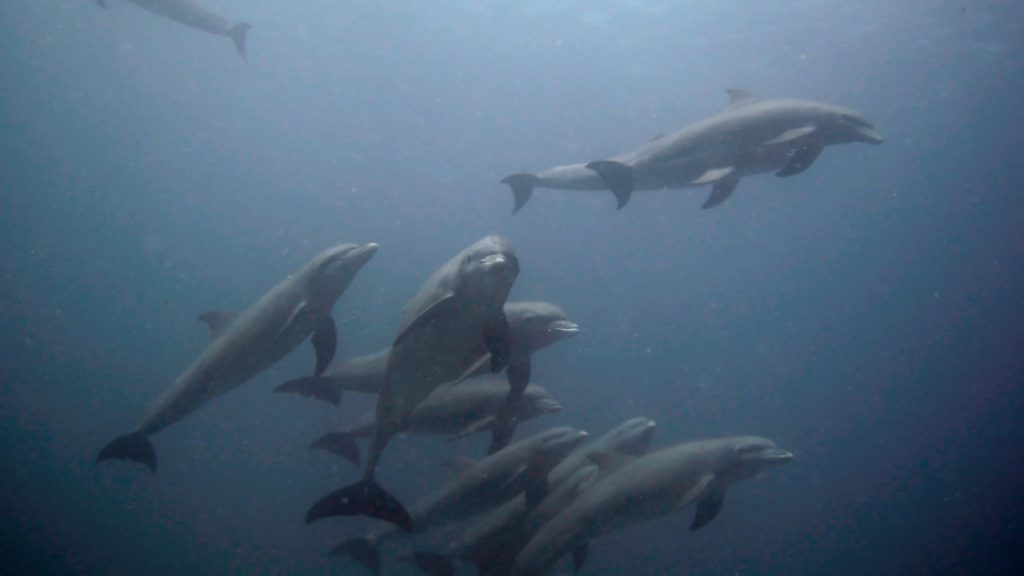
Another hard to reach and off-the-beaten-track dive destination, the Corn Islands are located some 70km off Nicaragua’s Caribbean coast. With most of the best dive sites situated around little corn island; divers can witness awesome coral as well as nurse sharks, turtles, reef fish and squid.
However, the biggest attraction of diving the Corn Islands is an underwater encounter with the resident pod of bottlenose dolphins who live here. Although it’s not guaranteed that you’ll see them, on average one lucky group of divers tends to see the dolphins every week or so; making this one of the best places in the world to dive with dolphins!
With an area of just 2.9 square km, Little Corn is an extremely laid back and tranquil island with reggae vibes, beach-side bars and beautiful nature; much of the island is covered in tropical forest whilst the friendly local populace are extremely warm and welcoming. Diving the Corn Islands was one of the highlights of my year living in Central America.
5) Malapascua
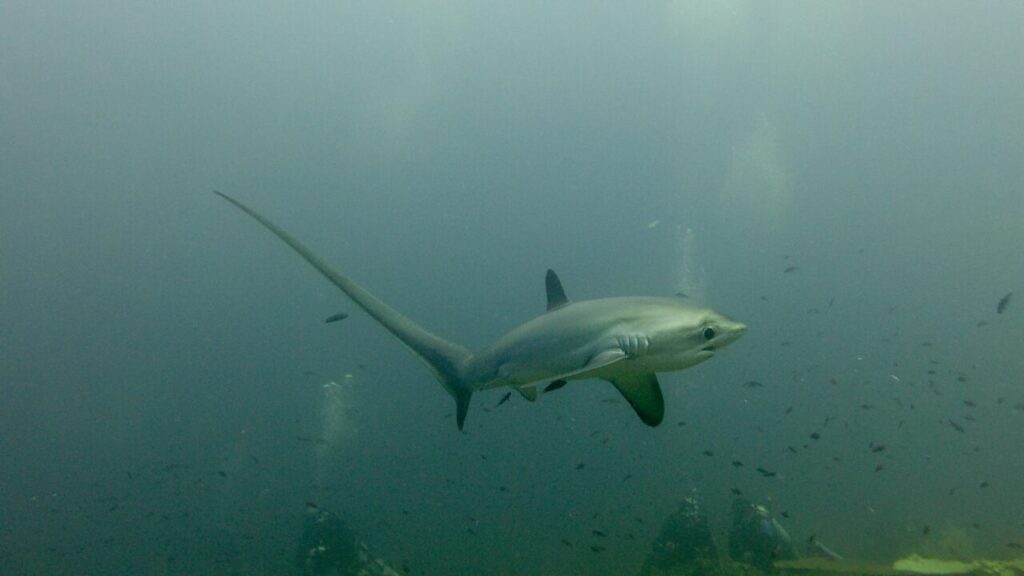
Another tiny island, this one situated off the northern tip of Cebu in the Philippines, Malapascua is also pretty hard to reach meaning that it has not become too commercialised. It is famous for being the hands down best place in the world to dive with Thresher Sharks; which look extremely distinct with their long tails that can be the same length of their entire bodies.
At the dive site Kinad Shoal, diver’s are almost guaranteed to see thresher sharks year round! There is also a small chance of seeing tiger sharks at Monad shoal. Plus there’s many local dive sites around Malapascua island that are home to nice coral reef and macro critters as well as one dive site called “Lighthouse” where you can witness mating mandarin fish at sunset.
For divers willing to make a half day trip to the nearby Gato Island; there is some spectacular coral reef, underwater tunnels and incredible marine life; the highlight of which is pygmy seahorses. At just 148 hectares, Malapascua is incredibly small, there’s not much else to do here besides snorkel and chill.
6) The Maldives
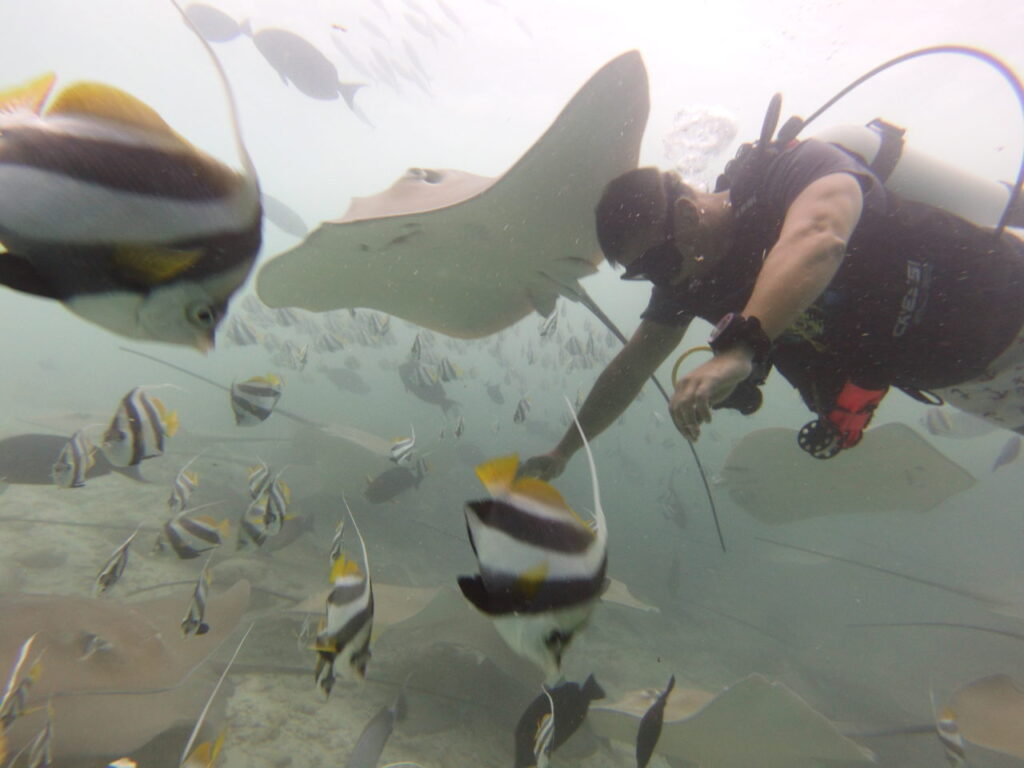
When it comes to big marine animals, few places in the world can compare to the Maldives; a nation comprised of a thin chain of 1,190 tiny islands grouped into 26 atolls and stretching 511 miles from north to south, located 370 miles of India’s southwest coast.
Whilst there is some pretty decent coral reef around the Maldives, it is most famous for big pelagic animals; being home to manta rays, stingrays, whale sharks, dolphins, turtles and all manner of sharks including tiger, bull, spinner, nurse, whitetip reef, hammerhead and thresher sharks as well as schools of hundreds of grey reef sharks.
There are also countless reef fish, big pelagic fish such as trevally, tuna and jacks and also turtles, octopus, nudibranch, pipefish and various macro critters to be seen. Everything I’ve so far listed I saw in just one week aboard a Maldives liveaboard!
Although it is an expensive destination and pretty difficult to reach, diving the Maldives is well worth-it; there is perhaps nowhere else in the world where you can easily see such an insane variety of big marine animals in a relatively short space of time.
7) Coron
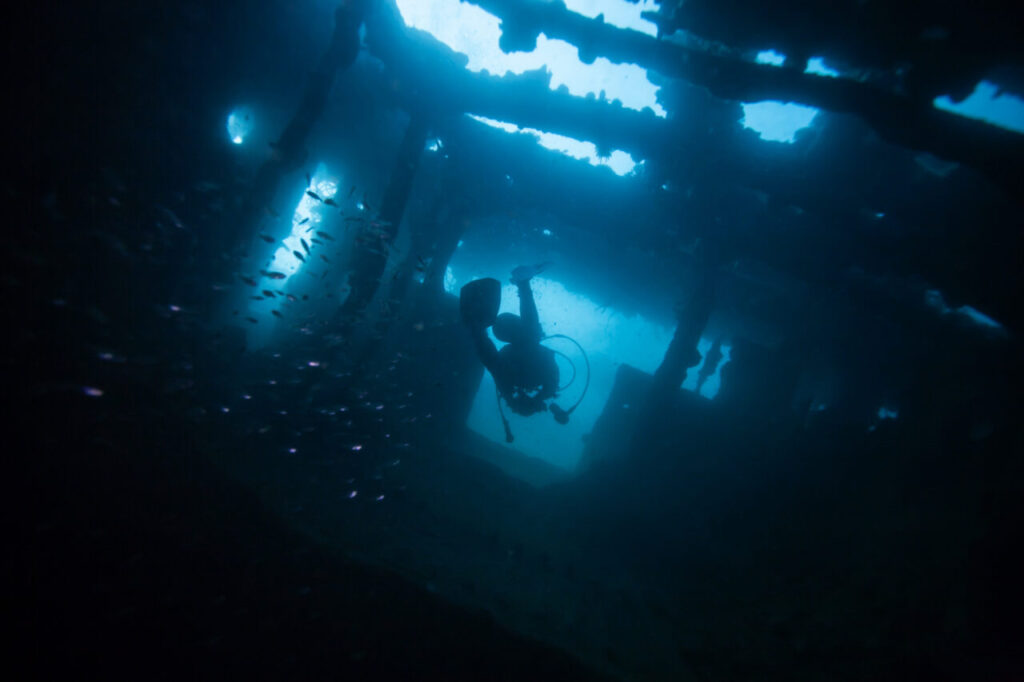
Located at the north tip of the Palawan in the Philippines, Coron is widely regarded as one of the best wreck dive destinations in the world and the wreck dive capital of all of Southeast Asia.
Recreational scuba divers can explore 10 Japanese Imperial Navy Ships sunk by US Task Force 38 in 1944 at the height of World War 2. A few of these wrecks are pretty small and lie at shallow depths; making them easy for less experienced divers; but most are around 82ft / 25m deep meaning advanced open water and wreck dive training are essential.
Most of the deeper wrecks are large; well over 328ft / 100m long and have many different rooms, compartments and areas to explore for the entire duration of a dive. Drifting through ghostly decks and hallways, divers can see anti-aircraft guns, boilers, engine rooms and even an underwater air-pocket. It is truly thrilling and somewhat eery stuff.
Coron is a visually stunning place with many beautiful beaches and freshwater lakes to explore on day trips (one of these freshwater lakes can also be dived); it is popular among backpackers and has a lively nightlife. For a large fee and a long early journey, divers can also go on a dive to see Dugong!
8) Playa del Coco
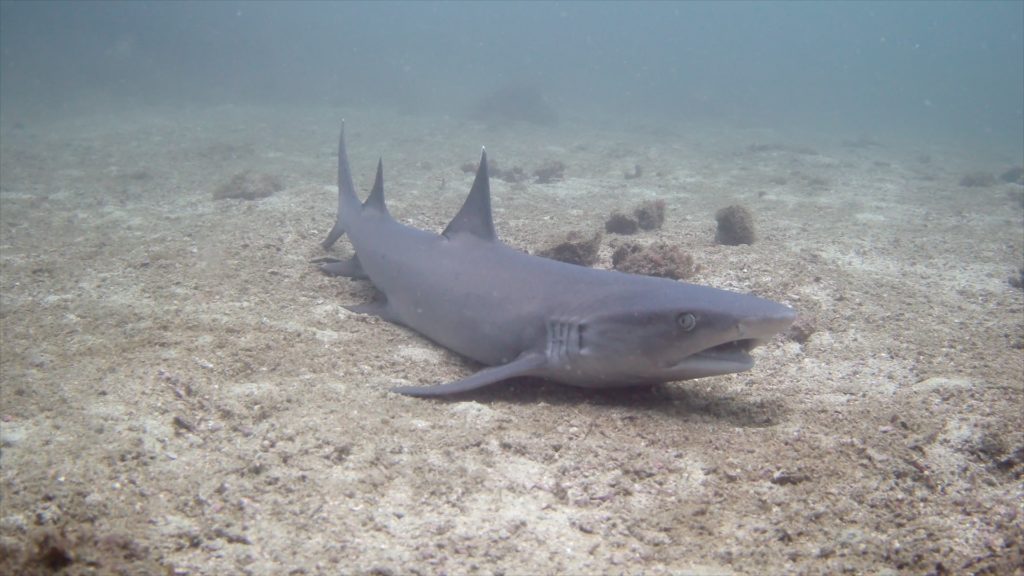
Located on the north Pacific Side of Costa Rica, Playa del Coco is a small beach-town with many beginner-friendly dive sites in which divers can see numerous whitetip reef sharks, stingrays, eagle rays, turtles and reef fish. It is also the jumping off point for the Bat Islands; famous for bull shark diving and the Catalina Islands; well-known for manta rays.
There is no coral reef here; the underwater landscape being comprised mostly of a sandy bottom occasionally broken up by boulders and rocky walls but the non-existent currents and shallowness of most dive sites; as well as their close proximity to the town makes Playa del Coco an excellent place to get scuba certified.
With a hearty but not over-the-top nightlife and a thriving health and fitness scene, Playa del Coco is surrounded by the stunning nature that defines much of Costa Rica; located within the beautiful Guanacaste Province it has plenty of epic viewpoints, awesome restaurants and national parks.
It is extremely easy to reach and has great tourist infrastructure – one thing that is worth mentioning is that like most Pacific-side Central American dive destinations, Del Coco is more expensive to dive than most Southeast Asia, European and Caribbean destiantions.
9) Coiba
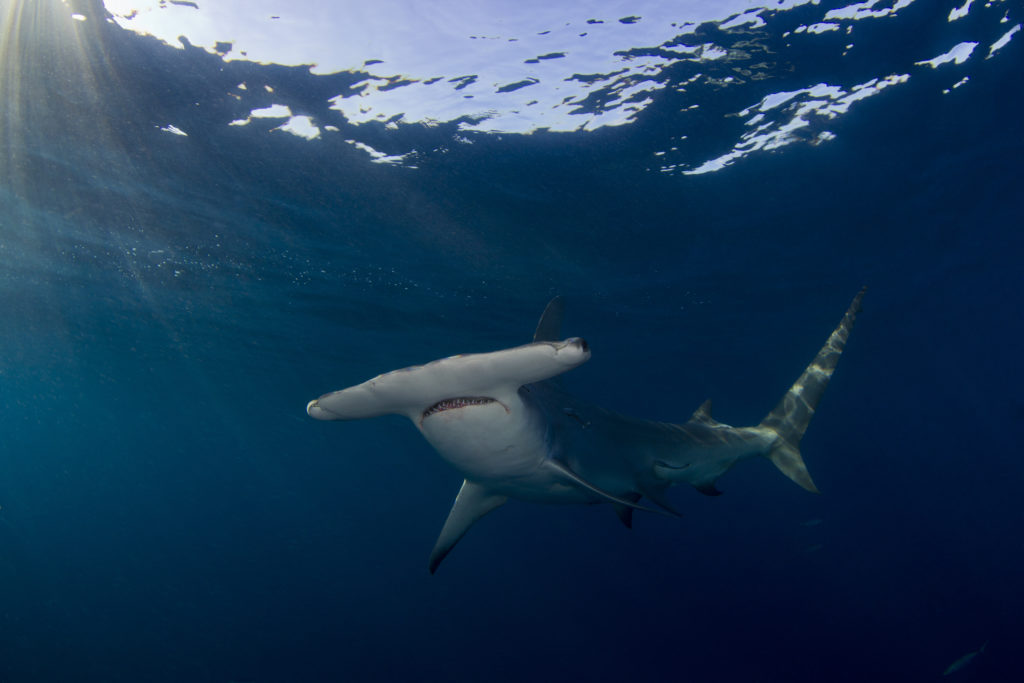
Situated off Panama’s north Pacific Coast within the Gulf of Chiriqui, Coiba Marine Park consists of the waters surrounding Coiba island plus 38 additional islands. The ability of the Gulf of Chiriqui to buffer against the effects of El Nino combined with the park’s special protection and a low human presence has resulted in a thriving marine ecosystem there.
There is some pretty decent coral reef; however the main appeal of scuba diving Coiba is the astronomical numbers of schooling fish including big eyed trevally, batfish and yellowtail snapper as well as many reef fish, southern stingrays, eagle rays, turtles and whitetip reef sharks.
For those willing to go the extra mile, at certain times of year it is possible to make an overnight trip to the tiny fishing village of Pixvae from which one can access the park’s most remote, northerly dive sites. Here, small schools of giant hammerhead sharks can often be seen between April and May – I saw seven individuals during my trip there in April 2022!
The launch-point for Coiba diving is Santa Catalina, a small seaside town that also has a thriving surfer scene.
10) Siquijor
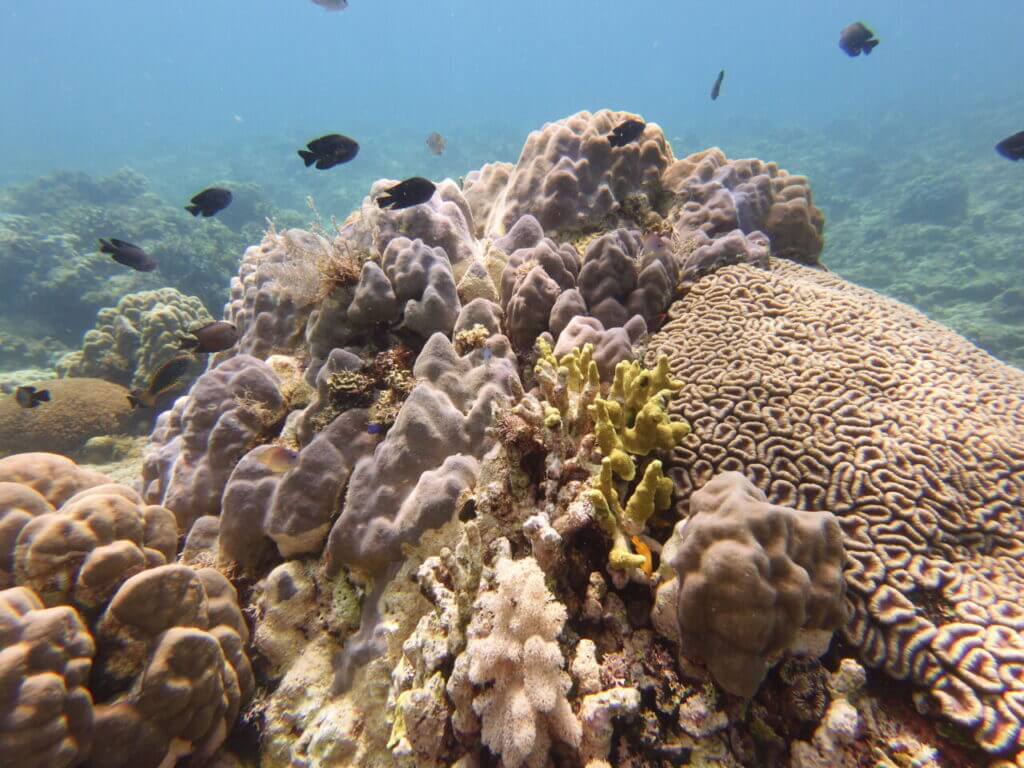
Located in the Philippine’s Visayas region, Siquijor is a peaceful island that has historically been renowned for spiritual healing and magic. With a virtually non-existent nightlife, vibrant tropical forest covering most of the island and an incredibly laid-back atmosphere it is one of the most peaceful destinations in the Philippines.
There are many dive sites around Siquijor with some truly out-of-this-world coral reef. Although the 2021 typhoons of the Philippines sadly took out large chunks of reef around many of the country’s other islands, Siquijor was almost entirely shielded from these storms and as of today has some of the most well-preserved and pristine reef in the archipelago.
Many reef fish and turtles make their home here; it’s also possible to see schooling milkfish and sometimes whitetip reef sharks whilst some dive sites also offer decent muck diving with tiny nudibranch and pygmy frogfish.
Affordable and easy to reach, Siquijor has many other awesome activities including caving, waterfalls, cliff-jumping, shamanistic healing and even skydiving!
Diving Squad DEBRIEFING:
Just-like-that! BAM! There you go: ten of the best places to go scuba diving in 2023. As you can see, it’s rare for two dive destinations to be alike; each one has its own charms, draws and attractions; both underwater and on land.
The more places you go scuba diving, the more types of dive conditions and environments you’ll be used to, ultimately making you a better and more experienced diver.
Of course, Earth is a mighty big place and with 71% of it comprised of water, there’s an absolute f*ck-ton of places to go scuba diving! Many may still be awaiting discovery…we’ll definitely have to follow this article with a part 2, 3, 4 and so forth…
For now though, it’s time to wrap this article up and sign-off! Happy diving – wherever in the world your scuba odysseys take you.